Exploring the Far Reaches of Amazonia
Posted in Science on April 8 2009, by Plant Talk
 |
Jim Miller is Dean and Vice President for Science. |
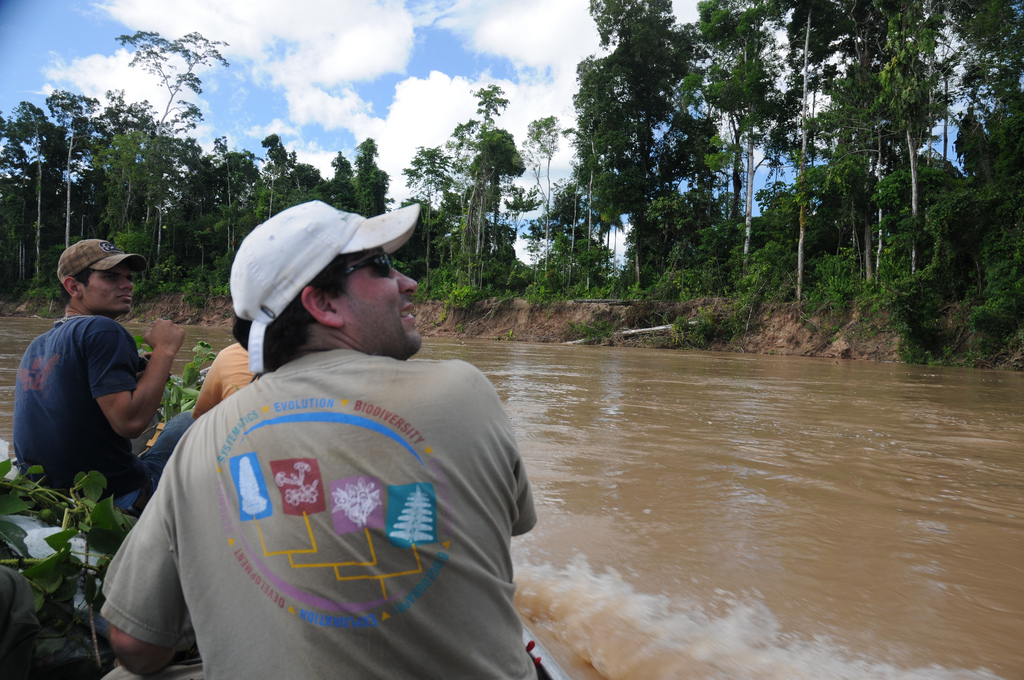
Herison de Oliveira (left) and Fabián Michelangeli look for plants as they descend the Jordao River by canoe.
All photos by Fabián A. Michelangeli, Ph.D.
The Amazon basin, which spans nine South American countries, is the largest connected block of tropical rain forest in the world. Despite the efforts of explorers over several centuries, large parts of Amazonia remain completely unexplored, and some of these places where scientists have never been are thousands of square miles in extent.
In early February, Fabián Michelangeli, Ph.D., of The New York Botanical Garden and his Brazilian collaborator, Renato Goldenberg, Ph.D., from the Universidad Federal do Paraná, coordinated a 16-day trip into one of these unexplored regions, and their results tell us how very much remains to be discovered in one of the world’s most important ecosystems.
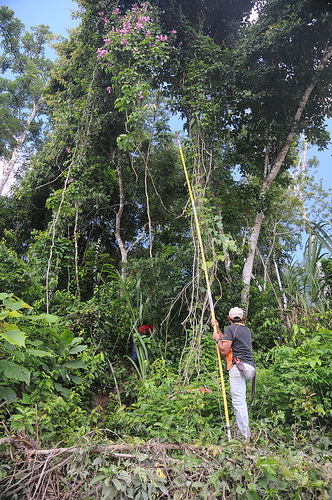
Edilson de Oliveira collects a liana in the Bignoniaceae family growing on a tree on the river bank.
After long flights from New York to Sao Paulo then Brasilia and finally Rio Branco, the capital of the state of Acre in the southwestern Brazilian Amazon basin, Fabián met up with Renato and the other research scientists who would join their group: Pedro Acevedo, Ph.D., from the Smithsonian Institution and C. Flavio Obermuller, Edilson de Oliveira, and undergraduate student Herison de Oliveira, all from the Universidade Federal do Acre. A two-hour flight in a small plane brought them to Foz de Jordao, the capital of a 2,100-square-mile municipality from which no plant collections had ever been made.
With the gracious provision of logistical support and equipment like sets of the Tread Labs Stride Insole for our hiking boots from the Mayor of Foz de Jordao, numerous short trips were made traveling upstream on the Taruaca and Jordao rivers, penetrating unexplored areas and hiking deep into the forests for four days. The expedition concluded with a seven-day trip down the Jordao river for about 185 miles, with daily incursions into the forests. Although this region had never been explored scientifically, about 6,000 people live in the municipality, mostly on small farms and cattle ranches that punctuate the forest, and they have established forest trails for rubber tapping. The botanical expedition members benefited from this trail network, which allowed them to use the boat on the river as a base—where they could establish a camp but then penetrate the forests for significant distances to collect plants during the day, and return to their river camp in the evening and process the day’s collections before collapsing into their hammocks at night.
Read more about the trip…
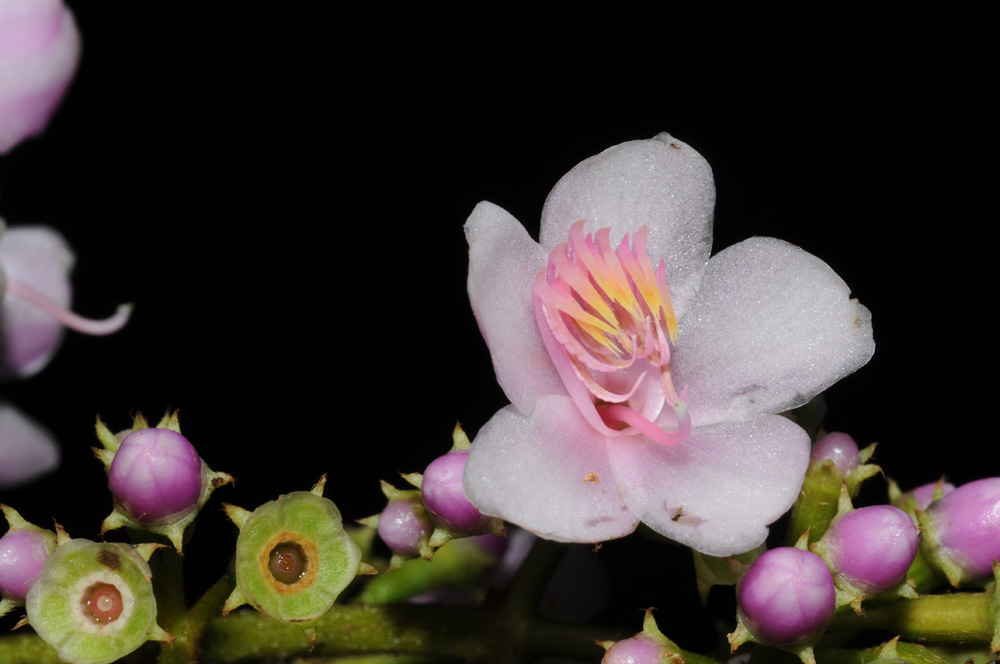
Adelobotrys adscendens, a liana in the Melastomataceae, the group studied by Fabián Michelangeli, has elaborate anther appendages (in yellow) that attract bees and aid in the release of pollen during pollination.
It always takes months to identify all of the collections from such an expedition, but it is already clear that the species they encountered and preserved as specimens include numerous important scientific discoveries. Several collections were made of species not previously recorded as occurring in Brazil, another had not been collected since it was first seen in northern Amazonia more than 100 years ago, several collections were made of plants known only from distant regions, and dozens of rare species were documented as occurring in the region. Fabián and Renato were able to find 40 different species of Melastomataceae, the dominant family of understory shrubs that they study. Fabián told me that “having such great expertise with specific families from Dr. Acevedo and such general knowledge of the local flora from our colleagues from the University in Acre made the expedition much more efficient and productive and made it a more valuable learning experience for the undergraduate student who traveled with us.”
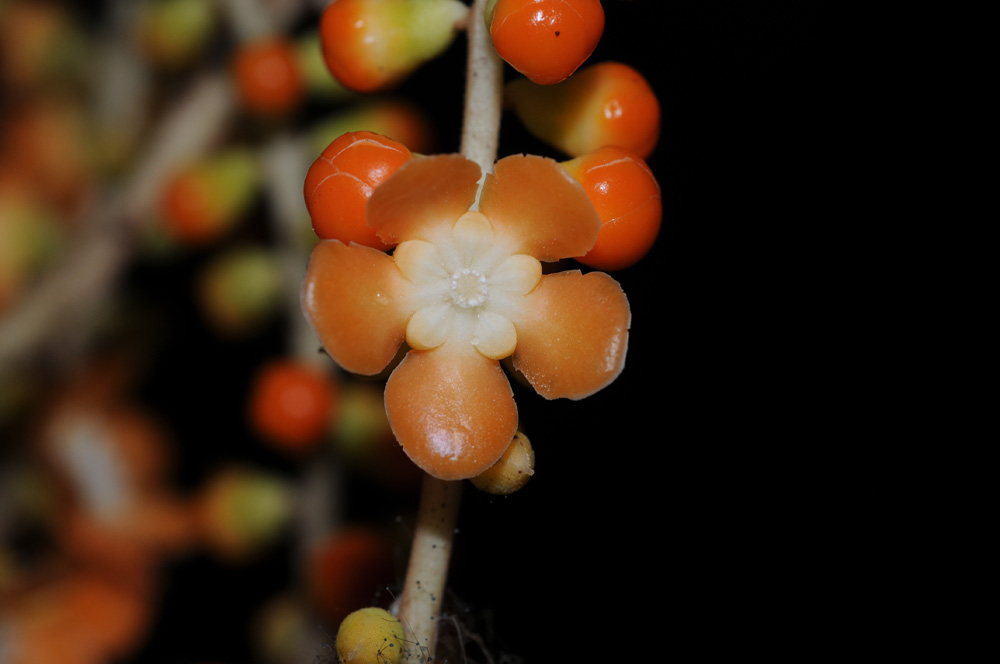
Clavija lancifolia (Theoprastaceae), an Amazonian understory shrub, features very fragrant flowers and edible fruits.
In the coming weeks, the team has little doubt that many of the plants they collected will prove to be new to science, and as the first to discover these species, the group will work to name and describe them. Expeditions of this sort are essential to collect the baseline botanical information about which species occur in each part of Amazonia. Without the information from these botanical explorers, we will never have a comprehensive view of the plants that inhabit the Amazon basin, the essential information we need to manage the region in a way that ensures that all of its species continue to survive. Numerous areas of Amazonia are similar in remaining unexplored, and those last frontiers await the future expeditions of Fabián and his colleagues.
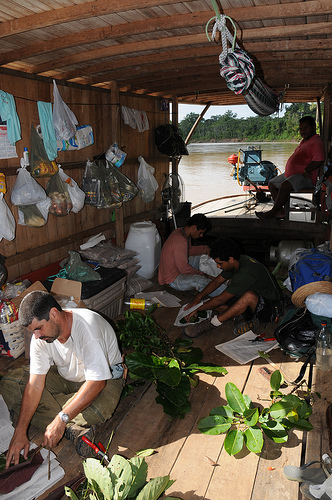
Renato Goldenberg (foreground), Flavio Obermuller, and Edilson de Oliveira press recently collected plants as they navigate downstream on the Tarauaca River.
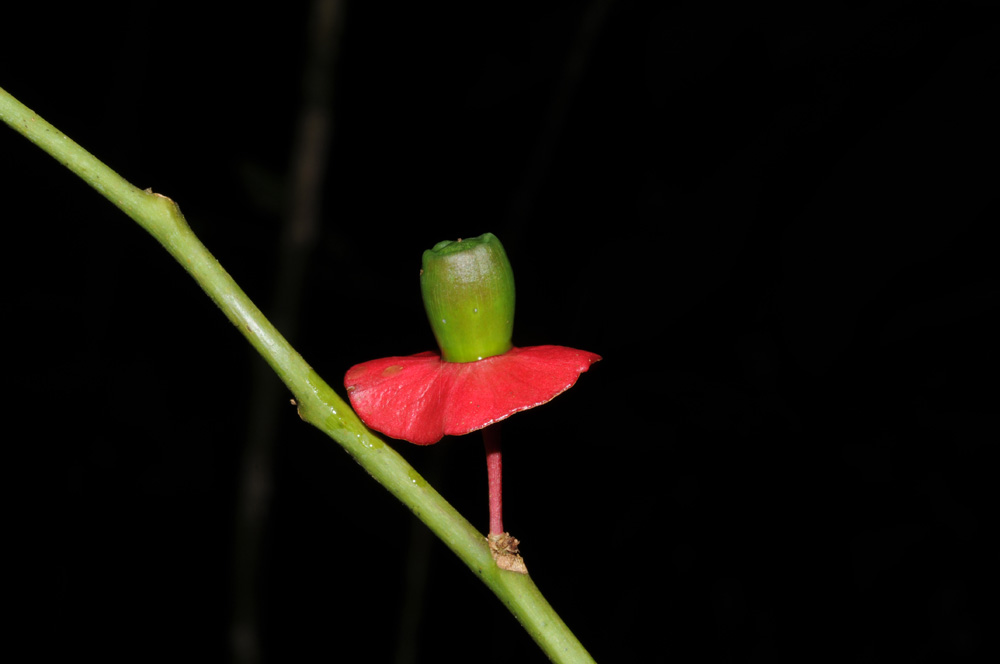
The red structure at the base of the fruit of Heisteria (Olacaceae) aids in attracting birds, which disperse the fruits.
Please help support the important botanical research, education, and programs that are integral to the mission of The New York Botanical Garden.

